Discovery Of The Least ‘Metallic’ Stellar Structure In The Milky Way
Eddie Gonzales Jr. – MessageToEagle.com – The sun is made up of 98.5% hydrogen and helium, two light chemical elements, while the remaining 1.5% consists of other, heavier elements such as carbon, oxygen, and iron. The abundance of heavier elements in a star is called its metallicity, and varies from star to star.
Distribution of very dense groups of stars in the Milky Way, called globular clusters, superimposed on a map of the Milky Way compiled from data obtained with the Gaia Space Observatory. Each dot represents a cluster of a few thousand to several million stars, as in the insert image of the Messier 10 cluster. The color of the dots shows their metallicity, in other words, their abundance of heavy elements relative to the Sun. The C-19 stars are indicated by the light blue symbols. Credit: N. Martin / Strasbourg Astronomical Observatory / CNRS; Canada-France-Hawaii Telescope / Coelum; ESA / Gaia / DPAC
It now turns out that the Milky Way is home to a stellar structure uniquely comprising stars with extremely low metallicity, with a heavy element content 2,500 times lower than that of the sun. This is well below that of any other known stellar structure in the universe.
This discovery, made by an international team led by a CNRS researcher at the Strasbourg Astronomical Observatory (CNRS / University of Strasbourg), and involving scientists from the Galaxies, Stars, Physics and Instrumentation Laboratory (Paris Observatory—PSL / CNRS) and at the J-L Lagrange Laboratory (CNRS / Côte d’Azur Observatory), is published on January 5, 2022 in the journal Nature.
This group of stars all belongs to a stellar structure in the Milky Way called C-19. Not only does this discovery challenge our current understanding and models of the formation of these stellar groupings, which exclude the existence of structures composed only of such stars, it also opens a direct window to the very earliest ages of star formation and the development of stellar structures in the very distant past.
Since heavy elements were produced by successive generations of massive stars, the low metallicity of the C-19 stars shows that they were formed only a short time after the birth of the universe.
Written by Eddie Gonzales Jr. – MessageToEagle.com Staff
Related Posts
-
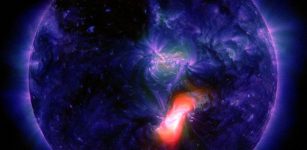 Sun Blasts Flare At Earth: New Year’s Eve Storm?
No Comments | Dec 30, 2015
Sun Blasts Flare At Earth: New Year’s Eve Storm?
No Comments | Dec 30, 2015 -
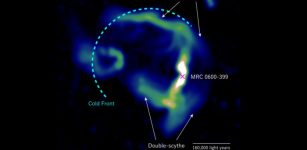 New Observation: Plasma Jets Reveal Magnetic Fields Far, Far Away
No Comments | Jun 4, 2021
New Observation: Plasma Jets Reveal Magnetic Fields Far, Far Away
No Comments | Jun 4, 2021 -
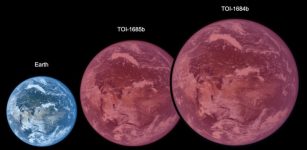 ‘Bare’ Super-Earths Give Clues To Evolution Of Hot Atmospheres
No Comments | Sep 27, 2021
‘Bare’ Super-Earths Give Clues To Evolution Of Hot Atmospheres
No Comments | Sep 27, 2021 -
 Dangerous Clouds At The Edge Of Space Are Spreading
No Comments | Feb 29, 2012
Dangerous Clouds At The Edge Of Space Are Spreading
No Comments | Feb 29, 2012 -
![The ultra-diffuse galaxy KKS2000]04 (NGC1052-DF2), towards the constellation of Cetus, considered previously a galaxy with no dark matter. Credit: Trujillo et al.](https://www.messagetoeagle.com/wp-content/uploads/2019/06/galaxynomatter001-307x150.jpg) Mystery Of The Galaxy With No Dark Matter Is Now Solved!
No Comments | Jun 9, 2019
Mystery Of The Galaxy With No Dark Matter Is Now Solved!
No Comments | Jun 9, 2019 -
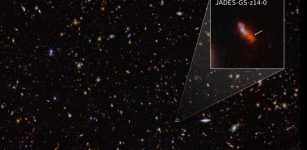 NASA’s James Webb Space Telescope (JWST) Found Most Distant Galaxy
No Comments | Jun 3, 2024
NASA’s James Webb Space Telescope (JWST) Found Most Distant Galaxy
No Comments | Jun 3, 2024 -
 Giant Piece Of Space Junk Is Heading Towards Earth – Pentagon Is Monitoring The Chinese Rocket’s Erratic Re-Entry
No Comments | May 6, 2021
Giant Piece Of Space Junk Is Heading Towards Earth – Pentagon Is Monitoring The Chinese Rocket’s Erratic Re-Entry
No Comments | May 6, 2021 -
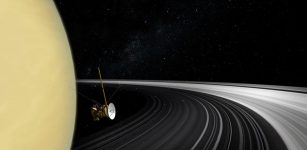 Saturn’s Rings Are Most Likely Less Than 100 Million Years Old
No Comments | Jan 21, 2019
Saturn’s Rings Are Most Likely Less Than 100 Million Years Old
No Comments | Jan 21, 2019 -
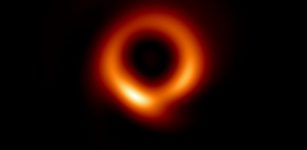 A Sharper Look At The M87 Black Hole
No Comments | Apr 13, 2023
A Sharper Look At The M87 Black Hole
No Comments | Apr 13, 2023 -
 The Space Environment Of Barnard’s Star b – Is It A Place For Life To Evolve?
No Comments | Apr 15, 2019
The Space Environment Of Barnard’s Star b – Is It A Place For Life To Evolve?
No Comments | Apr 15, 2019

